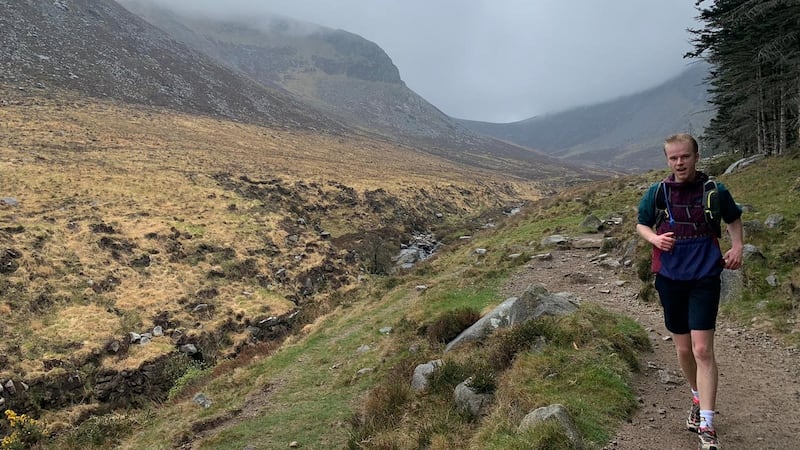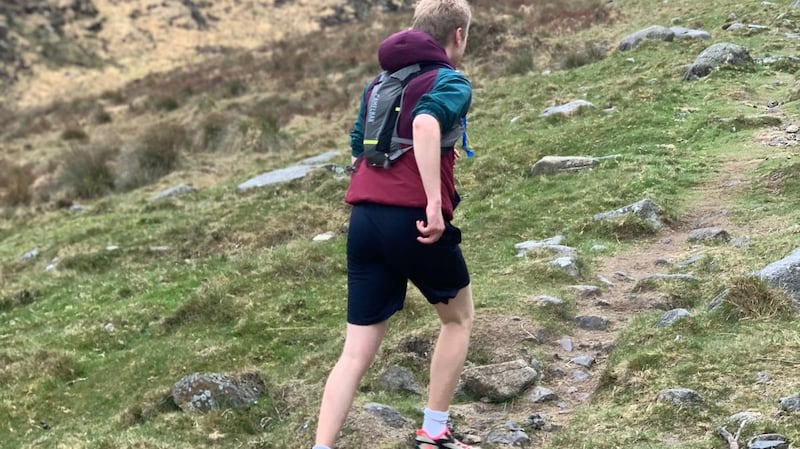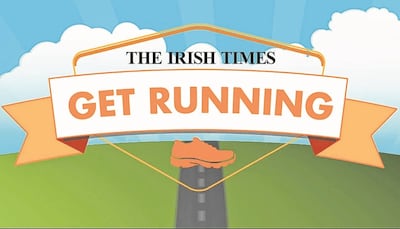As I hurtled down the rocky mountain path, a passerby said: “Here come the mountain goats.” I should have realised plummeting down steep and slippy boulders is never a good shout.
Two minutes later, I was plunging fast into a ditch.
Bad idea.
When I tell people I'm running my first ultramarathon in the Pyrenees mountains, I'm frequently asked how I'm training for the altitude and terrain. As much as I love running around Phoenix Park, the relatively flat topography just doesn't compare. So what could be better training than running up the highest mountain in Northern Ireland?
Slieve Donard is the highest of the Mourne Mountains in Co Down, and at 850m (2,790ft) high, its towering presence is an intimidating sight from the town of Newcastle below. No mountain on this island is as high as even the lowest point in our upcoming race, so it's impossible to train for the altitude.
Donard will have to do.
I convinced my racemate, Jack, that this would be useful training for our 50km and 60-obstacle Spartan Ultra in Andorra. The 10km trail is much shorter than our usual runs, so how hard could it be?
We set off from my native Co Louth towards the nearby mountain range. Once we crossed the Border, navigated twisty country roads and hyped ourselves up with some cheesy road trip music, we set down at a free car park where the trail begins.
Monstrous path
One of the locals promptly told us about the annual Mourne Seven Sevens walk where participants hike the seven tallest peaks in the range. Apparently, some ridiculously fit athletes dare to run this monstrous path. Although tempting, we figured Donard was enough for today. By God were we right.
The first section was a rugged forest disrupted by chunky roots from the surrounding trees. Things soon got difficult with all the obstacles on the forest floor, and at this point I wished I had tried harder with those high knees in my hurling days.
Soon the path opened to a wide valley littered with rocks, tufts of grass and the odd ditch no doubt intended to foil eejits like me. The incline was steeper than expected and our overconfident starting pace soon deteriorated into a hunched stride. Perhaps blind determination isn’t the best way to tackle stupidly large tasks.

Barely visible
With false peak after false peak, Jack and I began ascending into the clouds. At times when he ran a short distance ahead, he was barely visible. The final climb was more a frantic crawl than a run. “Don’t worry about our pace,” he told me. “We’ll make it up on the way down.”
Famous last words.
After a particularly viewless stop at the top of the mountain – and trying out a protein bar that tasted like a dry After Eight on steroids – we began our descent.
When you've run up more than 10 times the height of your country's tallest building, your legs tend to get a bit sore
“It’s all about the legwork!” Jack shouted as he galloped down the mountain. I bolted after him, praying a rogue obstacle wouldn’t disrupt my momentum and send me flying. Running downhill is more of a controlled fall than a run, and most of my energy and focus is on rapid footwork, thinking two to three steps ahead. Too fast and I can’t stop myself; too slow and we’ve no hope of finishing 50km in one day. I probably went too fast.
After cantering like a frenzied Himalayan ibex with a death wish, one misstep sent me hurtling off the path and into a ditch – luckily, right between two rocks. Besides a muddy leg and a fright, I avoided any serious injury.
The rest of the descent was more measured, and fortunately, we made it back in one piece. All within an average pace of 8 minutes/km.

Best purchase
I’ve bought a few bits and bobs for Andorra – the poo-inducing caffeine gels weren’t my finest choice – but by far the best purchase has been a Camelbak hydration vest I tried for the first time at Slieve Donard. This unassuming pack holds an impressive 1.5 litres of water and I recommend it for any long-distance runners who hate carrying a bottle that sloshes around in your hand.
On finishing the trail, my body had the stamina to keep going, my muscles were firmly tapping out. I often find it’s the other way around, but when you’ve run up more than 10 times the height of your country’s tallest building, your legs tend to get a bit sore.
I’m not sure if we’re quite the mountain goats we aspire to be when this ultramarathon comes around in June, but give us some good weather, a dollop of suncream and we’ll certainly give it a shot – so help me God.
Stay tuned…

Sign up for one of The Irish Times’ Get Running programmes (it is free!). First, pick the eight-week programme that suits you. - Beginner Course: A course to take you from inactivity to running for 30 minutes. - Stay On Track: For those who can squeeze in a run a few times a week. - 10km Course: Designed for those who want to move up to the 10km mark. Best of luck!













